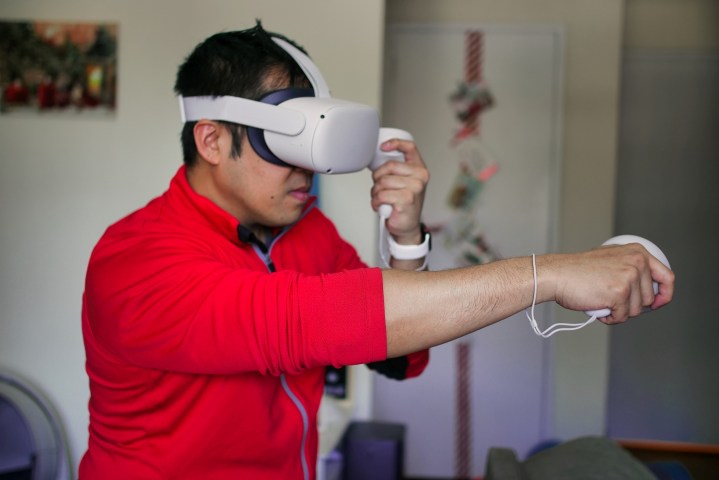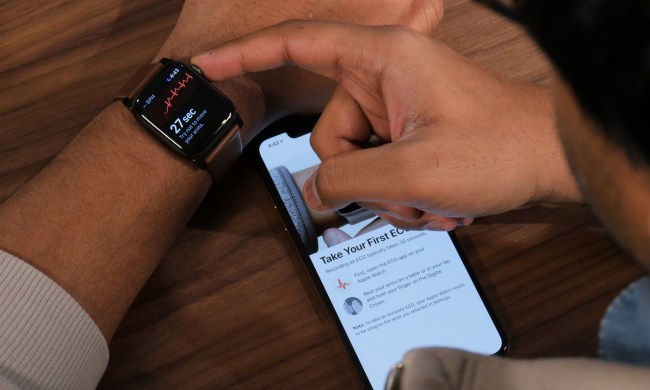If you’ve been exercising at home like I’ve been doing since the start of this pandemic, you know how tough it can be to stay motivated and achieve those ambitious fitness goals you set for yourself. With on-demand services and fancy connected home gyms cropping up over the course of the last year, you may think that working out at home would be more engaging than ever before — but it can be just as mundane as going to a traditional gym.
I’ve been spoiled the last month trying out on-demand and live classes with the Tempo Studio, which I appreciate because of its focus on strength training. The downside of this and other similar at-home services is that exercises are recycled to a certain degree — many are mixed into other workouts to make them appear new or different. There are just so many times I can tolerate burpees, so that’s why I’ve shifted gears and tried out workouts in virtual reality.
Here’s the thing: these virtual reality workouts won’t get you ripped, but they kept me more engaged.
Abundance of cardio workouts
What’s apparent about checking out a few virtual reality workouts using both the Oculus Quest 2 and HTC Vive Cosmos Elite is the heavy focus on cardio. Sure, you could buy a fancy Peloton bike, or connected rowers like the Ergatta and Hydrow, to burn crazy calories. But at the end of the day, you’re still doing the same basic exercise. Virtual reality, instead, offers many different variations of cardio workouts.

One that I’ve been trying out is FitXR for the Oculus Quest 2. If you’re familiar with the rhythm-based game Beat Saber, then you’ll be able to quickly grasp FitXR because it follows the same premise. Instead of wielding a saber to chop objects flung in your direction, you’re wearing a pair of boxing gloves to smack targets with your fists. There’s definitely a fair amount of hand movement and dodging that’s crucial to achieving a higher score, but what’s undeniable is that it kept my heart rate up.
More impressive is the fact that it can detect how hard I’m punching. This is important because on-demand workouts through an app, or a connected fitness display like Mirror by Lululemo, are not be able to discern how hard you hit. And that’s important because harder hits require more effort than wimpy ones.
The pros and cons of VR workouts
Since running outside is out of the question — I don’t run in the winter — virtual reality games have been the alternative for me when it comes to getting a proper cardio workout at home. Sure, my hands were getting a lot of the workouts in FitXR, but I was actually pleased to find that it didn’t neglect other muscle groups. There’s an option in the game to enable squats, which involves physically dodging barriers. Paired with the hand movements, I was actually surprised by how the combination helped to increase my heart rate.

This brings me to my fundamental point about virtual reality workouts: They’re highly engaging and fun. Gamifying the experience ensures that I have a goal in place with each workout session, despite the fact that I don’t have many other friends who own a headset to play against.
Now comes the downside. Despite the advancements made in the last few years with VR tech, the biggest challenge is that you still need to wear a headset and hold controllers for interactions. Sure, it doesn’t pose much of an issue when it relates to cardio workouts like dancing or boxing, but I can’t envision myself doing a set of burpees with them — the gear would just get in the way.
And if you’re into building muscle through strength exercises, you won’t find virtual reality is a practical way of achieving it. Not yet anyway. The technology isn’t quite there, which is why I find this all to be more of a complement to existing workout-at-home solutions. Perhaps there could be a time when traditional workout equipment, such as barbells, dumbbells, and kettlebells, could be incorporated into the VR workout experience?
Just as good as walking
Getting into shape doesn’t mean you need to be shredded from head to toe. Something as simple as walking is an effective way of leading a healthier lifestyle. The same holds true here with VR workouts, given the focus on cardio training. Moving in general is better than just being stationary.

Don’t get me wrong, I feel challenged by the group workouts I sign up for with the Mirror and Tempo Studio, but I wouldn’t go far to say that I love them — that’s because working out can sometimes feel like a chore. Virtual reality on the other hand? It’s a distraction I don’t mind because it keeps me moving without freezing my butt off outside during the wintertime.



